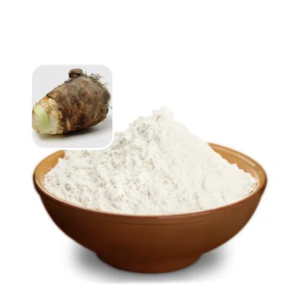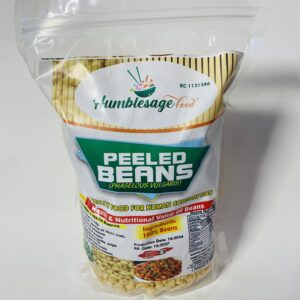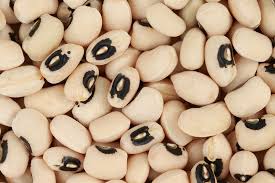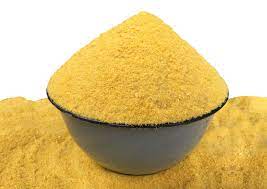Yellow Garri
₦4,000.00 – ₦8,000.00
Yellow Garri, a fermented and roasted cassava granule, is a staple in West Africa, particularly Nigeria. Known for its distinctive yellow color from added palm oil, it offers a slightly tangy, nutty flavor. High in carbohydrates and vitamin A, it supports energy and vision health. Enjoy in dishes like eba or soaked garri. Store in an airtight container to maintain freshness.
Description
Yellow Garri is a type of fermented and roasted cassava (manioc) granule that is widely consumed in West Africa, particularly in Nigeria. It is known for its distinctive yellow color, which is achieved by adding palm oil during the processing of the cassava. Yellow Garri is a staple food and is enjoyed in various forms, either as a snack, a side dish, or a main meal.
Botanical Description of Cassava
- Scientific Name: Manihot esculenta
- Family: Euphorbiaceae
- Plant Description:
- Leaves: The cassava plant has palmate (hand-shaped) leaves.
- Roots: The plant produces large, starchy tuberous roots which are the primary source of garri.
- Stem: Woody and can grow up to 2-3 meters tall.
Processing of Yellow Garri
The production of Yellow Garri involves several steps to ensure its distinctive taste, texture, and color:
- Harvesting: Mature cassava roots are harvested from the cassava plant.
- Peeling: The roots are peeled to remove the outer brown skin.
- Washing: Peeled cassava roots are thoroughly washed to remove any dirt and impurities.
- Grating: The washed cassava roots are grated into a fine pulp.
- Fermentation: The grated cassava pulp is placed in bags and left to ferment for a few days (usually 2-3 days). This process helps to reduce cyanogenic compounds and develop a sour taste.
- Pressing: After fermentation, the cassava pulp is pressed to remove excess water. This is usually done using weights or a hydraulic press.
- Sieving: The pressed cassava is sieved to remove fibrous materials, resulting in finer granules.
- Mixing with Palm Oil: The fine granules are mixed with red palm oil to achieve the yellow color.
- Roasting: The mixture is then roasted in a large frying pan or an earthenware pot over a fire, constantly stirred to ensure even cooking. This process dries the granules and gives them a crispy texture.
- Cooling and Packaging: The roasted Yellow Garri is allowed to cool before being packaged for storage or sale.
Physical Characteristics of Yellow Garri
- Color: Distinctive yellow due to the addition of red palm oil.
- Texture: Crispy and coarse granules.
- Aroma: Slightly sour with a nutty, roasted smell.
- Flavor: Slightly tangy due to fermentation, with a nutty and slightly sweet undertone from the palm oil.
Nutritional Profile (per 100 grams)
- Calories: Approximately 360 kcal
- Carbohydrates: Around 80 grams
- Protein: About 1-2 grams
- Fat: Roughly 1-2 grams, mostly from the palm oil
- Fiber: Approximately 4-5 grams
- Vitamins and Minerals: Contains vitamin A (from the palm oil), vitamin C, calcium, iron, and potassium.
Health Benefits
- Energy Source: High in carbohydrates, providing a quick and sustained energy source.
- Digestive Health: The fiber content aids in digestion and promotes a healthy gut.
- Vitamin A: The palm oil used in Yellow Garri is rich in vitamin A, which is essential for vision, immune function, and skin health.
- Gluten-Free: Cassava is naturally gluten-free, making Yellow Garri suitable for those with gluten intolerance or celiac disease.
Culinary Uses
- Eba: The most common use of Yellow Garri is to make “eba,” a stiff dough formed by stirring Yellow Garri into hot water. Eba is typically served with various soups and stews, such as egusi soup, okra soup, and vegetable soup.
- Soaked Garri: Yellow Garri can be soaked in cold water, often with sugar, groundnuts (peanuts), and milk, to make a refreshing and nutritious snack or light meal.
- Fufu: Can be used to make a softer version of fufu by combining it with hot water and kneading it to a smooth consistency.
- Garri Pudding: Can be used to make a type of pudding by mixing it with water and allowing it to set, often sweetened with sugar or honey.
Preparation Methods
- Eba Preparation:
- Boil water and pour it into a bowl.
- Gradually add Yellow Garri to the hot water while stirring continuously.
- Mix until a thick, smooth dough is formed.
- Serve hot with soup or stew.
- Soaked Garri:
- Pour cold water over a portion of Yellow Garri in a bowl.
- Add sugar, groundnuts, and milk as desired.
- Stir and allow it to soak for a few minutes before consuming.
Storage
- Conditions: Store in an airtight container in a cool, dry place to prevent moisture absorption and contamination.
- Shelf Life: Can last for several months if stored properly, with a longer shelf life compared to white garri due to the preservative properties of the palm oil.
Cultural and Historical Significance
- Culinary Staple: A fundamental part of West African cuisine, particularly in Nigerian households.
- Traditional Celebrations: Often served during festivals, family gatherings, and special occasions.
- Economic Importance: An important economic product, contributing to the livelihood of many farmers and traders in West Africa.
Safety and Precautions
- Cyanide Content: Proper fermentation and processing are crucial to reduce cyanogenic compounds naturally present in cassava.
- Quality Control: Ensure that the palm oil used is of good quality to avoid potential contamination.
Additional information
| Weight | N/A |
|---|---|
| Package Size | 1kg, 2kg |
Related products
-
Sale!

Cocoyam Powder
₦3,000.00 – ₦12,000.00 Select options This product has multiple variants. The options may be chosen on the product page -
Sale!

Peeled Beans
₦7,000.00Original price was: ₦7,000.00.₦6,000.00Current price is: ₦6,000.00. Select options This product has multiple variants. The options may be chosen on the product page -
Sale!

Cassava Flour
₦9,000.00Original price was: ₦9,000.00.₦8,000.00Current price is: ₦8,000.00. Select options This product has multiple variants. The options may be chosen on the product page -
Sale!

Black eyed beans
₦16,000.00Original price was: ₦16,000.00.₦15,000.00Current price is: ₦15,000.00. Select options This product has multiple variants. The options may be chosen on the product page


Reviews
There are no reviews yet.